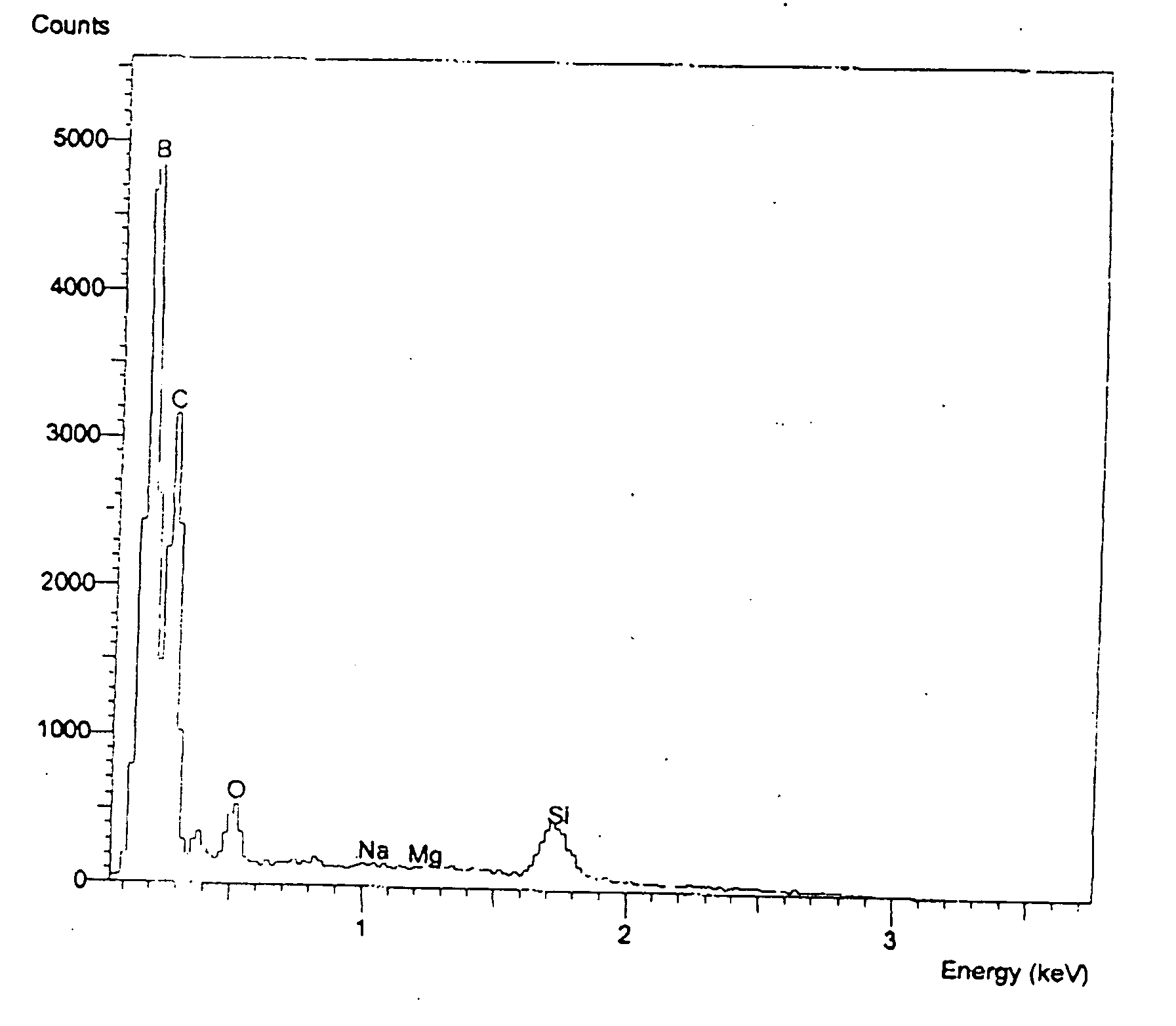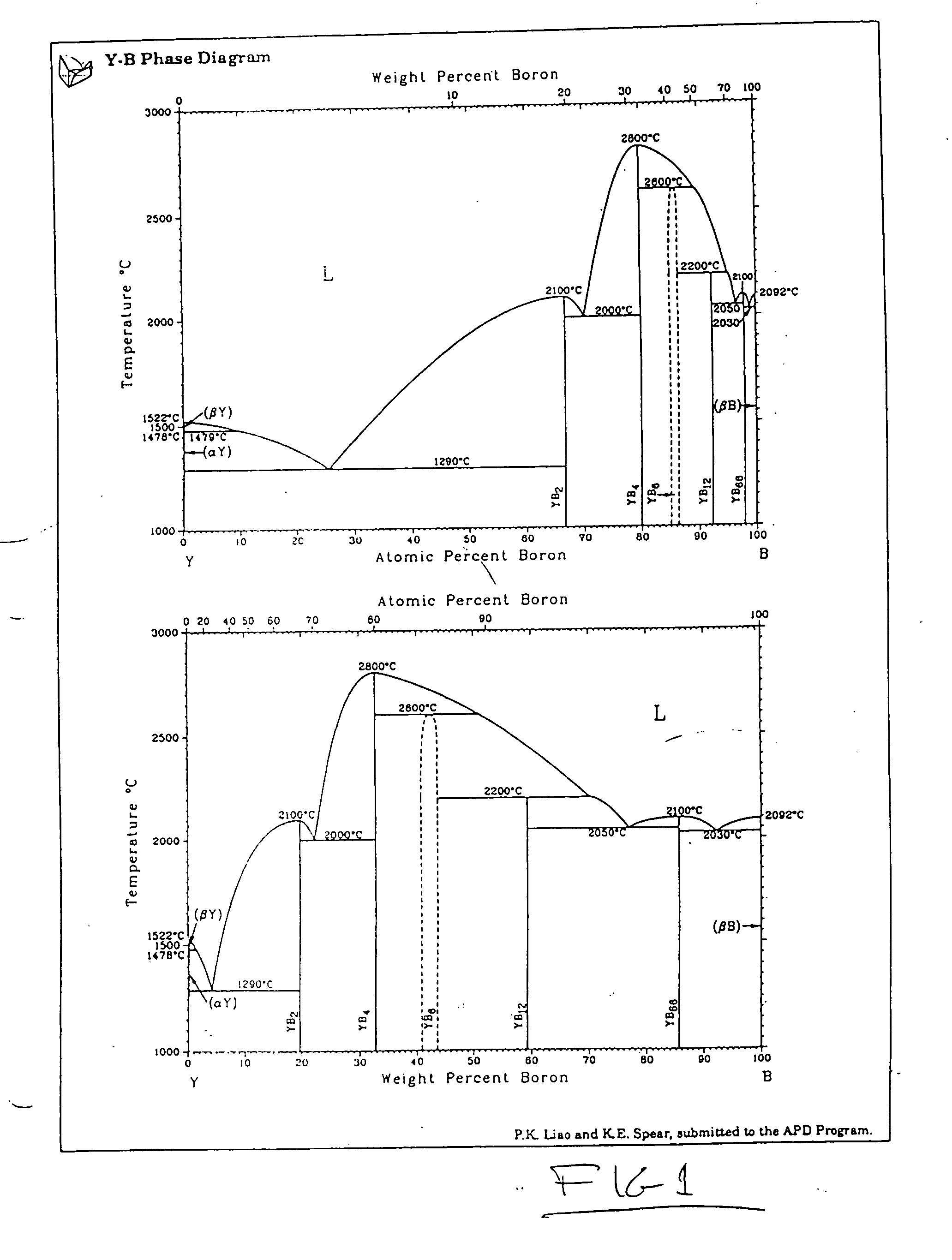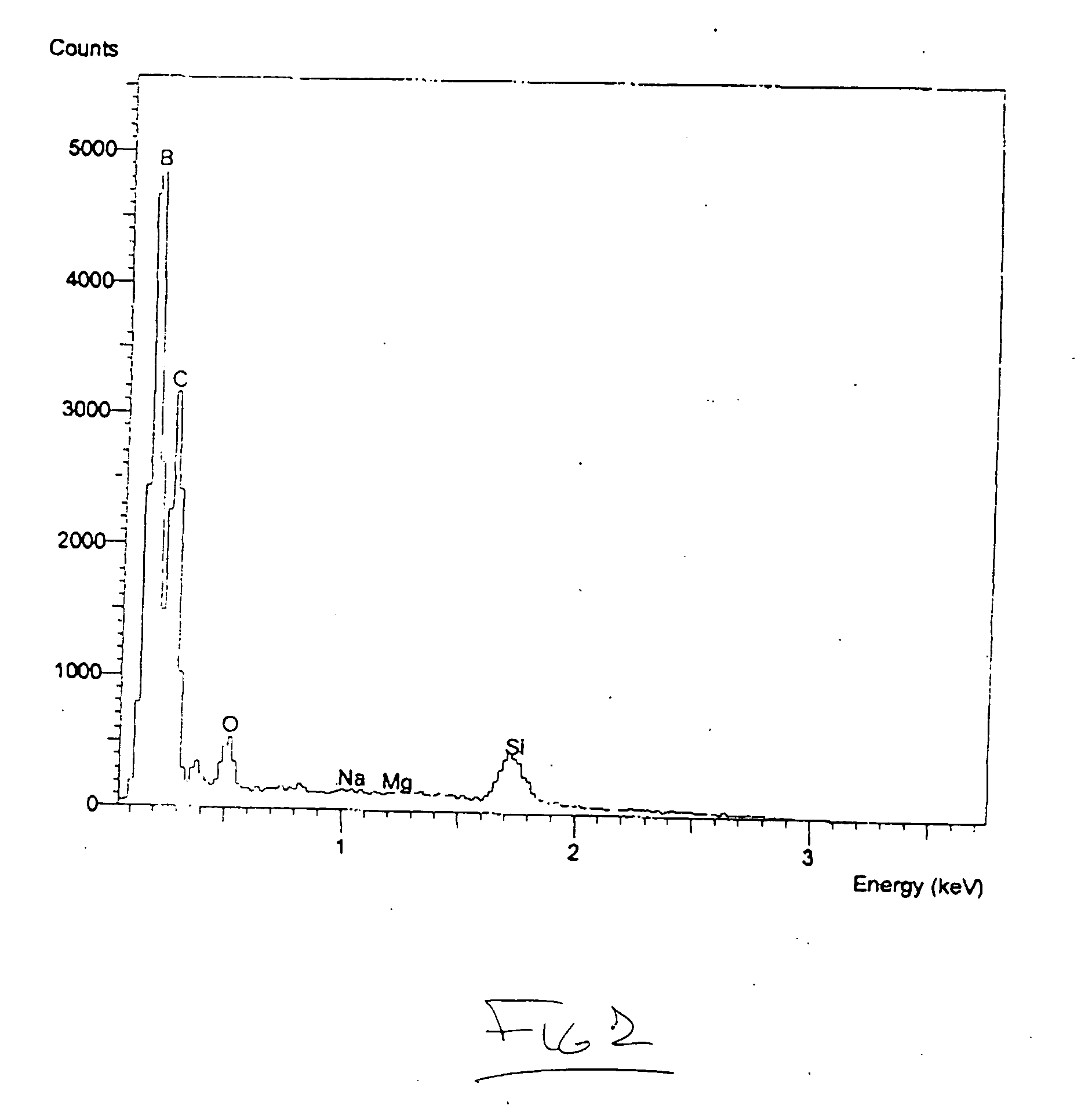Method for depositing boron-rich coatings
a technology of boron-rich coatings and boron-rich boron, which is applied in the direction of solid-state diffusion coatings, vacuum evaporation coatings, plasma techniques, etc., can solve the problems of low efficiency of boron depositing
- Summary
- Abstract
- Description
- Claims
- Application Information
AI Technical Summary
Benefits of technology
Problems solved by technology
Method used
Image
Examples
example 1
[0074] YB66 powder in the form of typically 50 to 75 micrometer particles has been used as the feedstock in an industrial plasma spray system utilizing argon gas as a carrier. The powder has been observed to spray easily and produce a characteristic granular deposit which can readily be built up to considerable thickness easily exceeding 3 mm. The deposit adheres readily to a wide variety of materials, including aluminum, steel, titanium, carbon, molybdenum, tungsten, tantalum, silicon, alumina, silica, zirconia, boron nitride, porcelain, and an aerogel foam. Good adhesion has been observed for all substrate materials tested. The resultant coating layer is extremely hard and difficult to break. In the case of a carbon substrate, for example, the graphite substrate will typically split or shatter prior to the debonding or failure of the coating. The coating has been rapidly deposited over large surface areas and surfaces with complex shapes using well known plasma spray methods.
example 2
[0075] YB66 has been plasma spray coated onto a tungsten coil filament for use as an electron emitter in an ion source. In addition, other ion source components, including the molybdenum arc chamber walls and graphite electron repeller, have been similarly coated in order to produce an ion source with enhanced boron emission as well as to minimize the output of contaminating atomic species. The tungsten coil filament has been heated to near its normal operating temperature when only the tungsten surface is exposed, and the filament has been observed to produce electrons capable of sustaining the arc discharge of the ion source. The coating was found to melt at the operating temperature of the filament, but the liquid coating did not alter the electron emission properties. The coated filament was found to enhance the boron output of the ion source, and the coating was not observed to detract from the normal filament lifetime, and tungsten contamination of the plasma was significantly...
example 3
[0076] A DC magnetron sputter target has been formed using buildup of a 1.5 mm thick coating of YB66 using plasma spray. The sputter target transferred boron at a rate which was approximately 10 times greater than from RF sputtering. Sputter targets have been made by coating on a backing of graphite, copper and other materials.
PUM
| Property | Measurement | Unit |
|---|---|---|
| temperature | aaaaa | aaaaa |
| thickness | aaaaa | aaaaa |
| thick | aaaaa | aaaaa |
Abstract
Description
Claims
Application Information
 Login to View More
Login to View More - R&D
- Intellectual Property
- Life Sciences
- Materials
- Tech Scout
- Unparalleled Data Quality
- Higher Quality Content
- 60% Fewer Hallucinations
Browse by: Latest US Patents, China's latest patents, Technical Efficacy Thesaurus, Application Domain, Technology Topic, Popular Technical Reports.
© 2025 PatSnap. All rights reserved.Legal|Privacy policy|Modern Slavery Act Transparency Statement|Sitemap|About US| Contact US: help@patsnap.com



